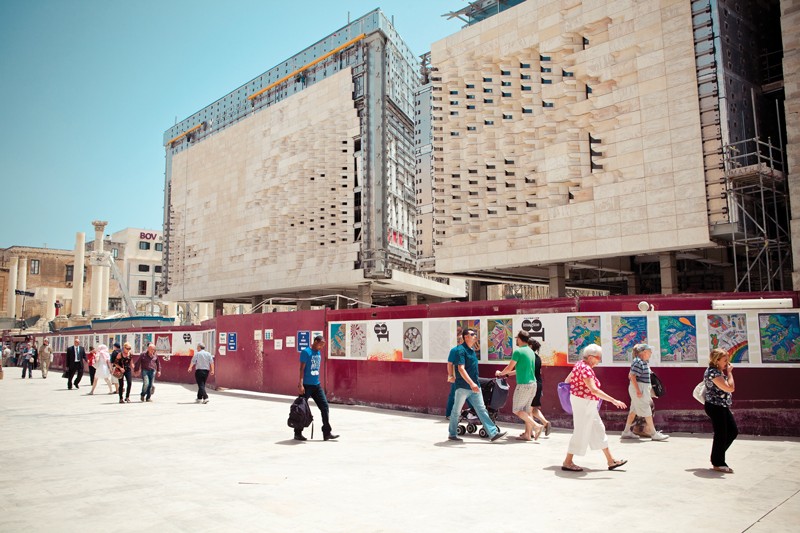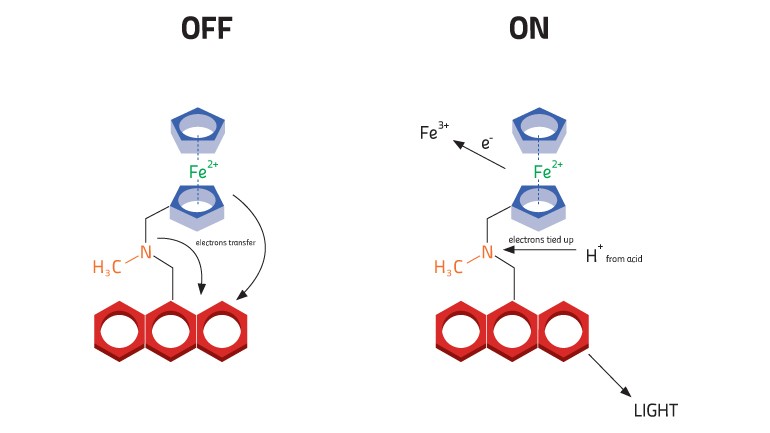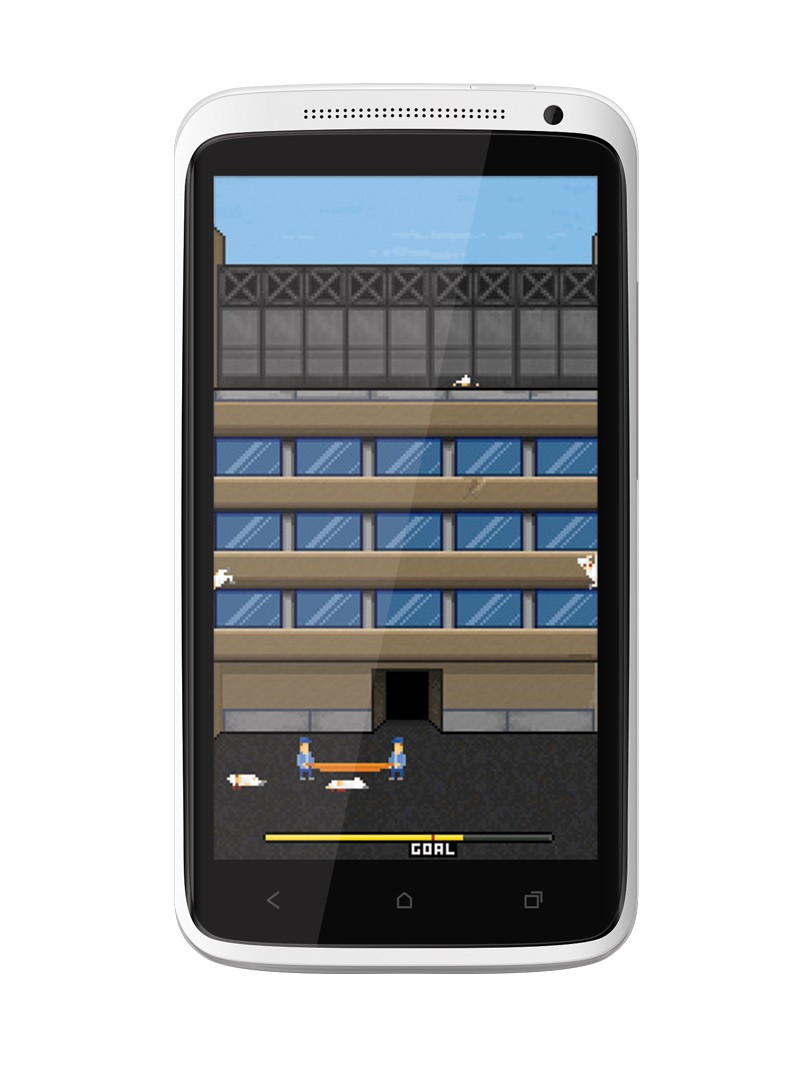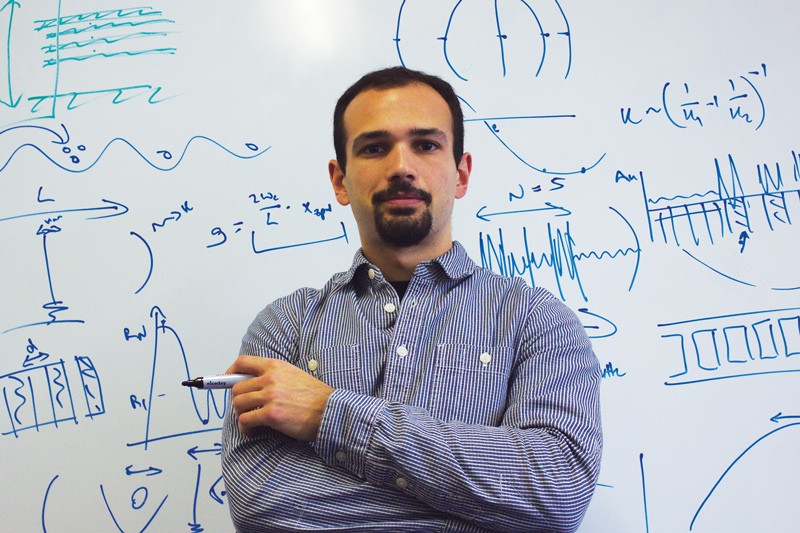Through the Looking Glass
What’s your favourite game? Pacman? Doom? World of Warcraft? Most of us have spent hours immersed in video games, many still do. Prof. Gordon Calleja studies why and how we get so involved in games. Science writer Dr Sedeer El-Showk found out about Calleja’s latest book and game that are gaining worldwide fame.
Treating stone to save Maltese Culture
Malta has three UNESCO world heritage sites which need constant conservation. Generally, it is better to preserve the original building material than replace it. The conservation method called consolidation can glue deteriorating stone material to the underlying healthy stone maintaining it, but few consolidants have been tested on local Globigerina limestone. Sophie Briffa (supervised by Daniel Vella) tested a new set of consolidants which are stronger than other compounds but affected the colour of the stone. She applied five different conditions on the stone. The first three were novel treatments. They were based on a hybrid silane (tetraethylorthosilicate (TEOS) and 3-(glycidoxypropyl)trimethoxysilane (GPTMS)) but one had nanoparticles, one had modified nanoparticles, and the other lacked them. The fourth was a simple laboratory-prepared TEOS silane. The fifth was untreated limestone samples for comparison.
The treatments successfully penetrated the stone’s surface. Microscopy coupled with other techniques including mercury intrusion porosimetry carried out in Cadiz, Spain, confirmed this infiltration and the stone’s physical qualities: strength, drilling resistance, and so on. Half of the treated stones underwent accelerated weathering. The consolidants with nanoparticles or modified nanoparticles were stronger than the other treatments. They also maintained the original surface colour and improved the stones’ ability to absorb water. On the other hand, they were less resistant to salt crystallisation that can damage the stone making it brittle.
The best consolidant for Maltese stone has not yet been found. Ideally, it should have a good penetration and good weathering properties that preserve the stone’s appearance. It should allow ‘breathability’ and be reversible. Current stone consolidation techniques are irreversible since they permanently introduce new material into the stone. These are only acceptable since consolidation is a last attempt to save the stone before complete replacement.
French writer Victor Hugo summed up the importance of this research when he said, ‘Whatever may be the future of architecture, in whatever manner our young architects may one day solve the question of their art, let us, while waiting for new monuments, preserve the ancient monuments. Let us… inspire the nation with a love for national architecture’.
This research was performed as part of an M.Sc. in Mechanical Engineering at the Faculty of Engineering. The research was funded by the Strategic Educational Pathways Scholarship (Malta).
Logical chemicals
Chemistry is not usually associated with logic gates, sensors, and circuits. However, a new breed of chemist — the molecular engineer — is adding a bit of chemical spice to them. Given the right tools, his/her hands can synthesize anything, from molecules that assemble into large structures to others that can display information about their environment.
Thomas Farrugia (supervised by Dr David Magri), created a molecule that could be toggled between an ON and OFF state using AND Logic. AND logic means that it needs two chemicals to switch state, adding just one chemical makes no difference. The states are easily recognised by shining UV light on the molecule since only the ON state produces blue light.
In the OFF state, the movement of electrons from two input sites prevents light being released. Stopping the electron transfer enables light release. The blue light shines when specific chemicals bind to the two input sites. The chemicals use up the electrons being transferred, letting the output of the molecule absorb UV light and shine blue light.
The two chemicals added were an acid and an iron (III) source (like what is found in rust). The acid provides hydrogen ions that bind to the nitrogen atom, whilst the iron (III) ions attack the molecule’s iron (II) atom (pictured as Fe). The molecule displays AND logic since it needs both the acid and iron (III) to turn on light emission.
The molecule was synthesised using a one step reaction and tested to determine the strength of the ON and OFF signals. Testing by fluoresence spectroscopy is essential to determine whether it would make a viable sensor, since the technique compares the strength of the ON and OFF state. The molecule will only work well if there is a large difference between the different states, since a machine needs to detect the change.
This molecule can sense the extent of acidity and iron (III) ions in a solution, and convey that information using light, which is easily measured. The molecule’s design could also be integrated into bigger and more complicated molecules so as to carry out other logical and mathematical operations using chemicals. These molecules are a step towards chemical computers.
This research was performed as part of a B.Sc. (Hons) Chemistry with Materials at the Faculty of Science.
Finding bats by listening
Sonar for navigation was implemented after the Titanic disaster in 1912. Bats have used this remarkable technique for the past 50 million years. These nocturnal animals emit ultrasonic signals and analyse the returning echoes to avoid obstacles or predators and find their prey. For humans, studying bats means long hours in the night spent tracking their movements or capturing them with nets. To avoid some of the bat research difficulties, conservation researchers identify and study bats by eavesdropping on the ultrasonic sounds they emit.
Clare Marie Mifsud (supervised by Dr Adriana Vella) has now studied bats in Malta linking specific sound patterns to specific bat species and their behaviour. Bats can be identified using acoustic detection because they all use different frequency patterns to suit their needs. The analyses can be used for further research and conservation monitoring of local bats.
Her study encompasses 38 research survey sites spread all over the Maltese Islands. Two bat detectors (a heterodyne and a real-time expansion detector) are used simultaneously to instantly identify and analyse the species. Nine different bat species are already confirmed to inhabit the Maltese Islands till now.
Three species (Rhinolophus hipposideros, Myotis punicus, and Plecotus austriacus) were recorded a few times (2% of survey time), since they use low intensity echolocation signals. Other bat species (Hypsugo savii, Pipistrellus pipistrellus, Pipistrellus kuhlii, and Pipistrellus pygmaeus) were detected more often (92% of survey time). All Maltese bats feed on insects and are found to spend most of their time in valleys followed by other habitats including cliffs, woodlands, agricultural land, shrublands and urban settlements. Valley biodiversity is important for local bat survival and needs to be preserved.
Through the use of bat acoustic detection systems and signal analyses, this detailed research is providing the first important set of data of its kind for all bat species detected in the Maltese Islands. This complements other bat research which has been ongoing since 1998 by the Conservation Biology Research Group (University of Malta). They have been involved in different bat studies including the ecology and genetics of local bat populations. These research efforts aim at reversing the trend of decreasing bat numbers. Mifsud’s research paves the way towards developing another effective long-term monitoring tool for the conservation of bats in Malta.
This research is part of an M.Sc. in Biology at the Faculty of Science. BICREF (The Biological Conservation Research Foundation) provided voluntary assistance during field work. The research was partially funded by the Strategic Educational Pathways Scholarship (Malta). This Scholarship is part-financed by the European Union – European Social Fund (ESF) under Operational Programme II – Cohesion Policy 2007-2013, ‘Empowering People for More Jobs and a Better Quality Of Life’.
The key to networking
I first heard about COST (European Cooperation in Science and Technology, a networking platform for scientists www.cost.eu) way back in 1996 during a pharmacokinetics meeting in Athens. Some participants mentioned that their attendance had been funded by COST. So on my return I contacted the Malta Council of Science and Technology to try and obtain more information. When I learnt that COST funds EU networking I quickly applied to become a member of a COST action (this is what COST calls a network). After bureaucratic leaps and bounds I become Malta’s representative on a COST action. It certainly opened new horizons to me and the networks I formed with top researchers in Europe were unique.
By 2010 my enthusiasm resulted in MCST nominating me as Malta national contact point for COST. It has been of huge satisfaction that in these three brief years Malta’s participation has risen from 6 actions to over 100. Over 150 Maltese researchers take part in COST.
Why is COST so important for Malta?
The complaint I hear most often in Malta, not only in academic circles but also among SMEs (small to medium enterprises), is that research in science is only for the elite, that it is too high brow and that it is not relevant to Malta. COST proves otherwise. What else could link disaster bioethics, to colour and space in cultural heritage to the comparison of European prostitution policies, with submerged prehistoric archaeology? Other links include the quality of suburban building stocks, integrated fire engineering and response, and language impairment in a multilingual society. COST also funds networks across a whole spectrum of research from the humanities to the fundamental sciences including string theory to childbirth in various cultures.
Participating in a COST action involves very simple administrative and funding procedures. For once, our small size is an added advantage since every COST country is allowed to nominate two members to participate in each action, putting Malta COST researchers at par with researchers from much larger countries. Achieving these results has not been easy, since many researchers hesitate and require persistent prodding. There are frequent reminders and one to one meetings to persuade them to participate. It has been a real eye-opener meeting researchers in Malta from different disciplines and learning about their research.
Deciding to participate in COST may seem a small step to some, an added administrative burden to others, while some see it as another travel commitment. COST offers the response to the conundrum of how to overcome our physical (and perhaps in some instances also mental) insularity. You should not let this opportunity pass…
COST in Malta is managed by the Malta Council for Science and Technology. For more information see www.mcst.gov.mt/networking/cost or contact Dr Janet Mifsud, COST CNC, (+356 23402582/2845, janet.mifsud@um.edu.mt) or cost.mcst@gov.mt
Hotline Miami
Push start. Grab a weapon. Get shot. Repeat… ad infinitum. ‘Punishing’ hardly describes a session of Hotline Miami. Typically, within 10 seconds you could die three or four times. It is just as frustrating as it is challenging. Addictively, you will not give up until you pass that sneaky little passage.
Hotline Miami is an ultra-violent, psychotic game, where your only aim is to kill all the ‘bad guys’.
Yet, every little move counts, and deciding which weapons to use or which door to open first will reveal the deep strategic possibilities of the game’s intense experience. As you make your way through a pile of corpses, the suspense builds up to unbearable levels as you risk losing all in-game progress for just a little mistake. The massacre is only interrupted by brief moments that reveal details of our mysterious ‘hero’s’ back-story. Keeping true to expectation, even these interludes are awkward if not disturbing, and hardly shed light on our displaced, faceless avatar.
The excellent game tops it all with an irresistible ‘80s aesthetics and a neurotic electronic soundtrack. You’ll quickly find out why this game has stolen the show winning so many awards, and has hooked fans of Grand Theft Auto and of good old shoot’em up games. Hotline Miami is a joy in repetition, providing that being stuck in a Clockwork Orange–like scenario is your idea of joy.
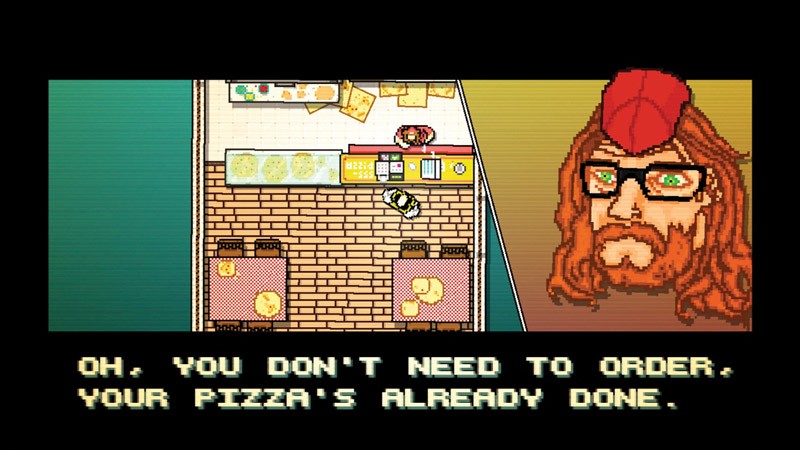
PHONE STORY
What is the story behind our smart phones? Phone Story retraces the production stages of our favorite products, showing us the dramatic working conditions behind their assembly. It seems like Apple didn’t like it: the game is now banned from the App Store.
Mass riots and frequent suicides shed a dark light on Foxconn, the company that assembles product for the likes of Apple, Microsoft, and Amazon. Afterwards, it became impossible to ignore the conditions of the workers that mass-produce contemporary tech gadgets.
Enter Molleindustria, the software house funded by Paolo Pedercini, responsible for a remarkable series of ferociously satirical, “serious” games (check molleindustria.org for more — it’s worth it). Phone Story takes us through an uncomfortable ride of funny minigames with classic, familiar mechanics juxtaposed to harsh vignettes: underage miners extracting silicon, suicidal workers jumping from the roof of the factory, and an army of Apple — pardon, “Pear” — fans taking a flagship store by storm.
Don’t expect a radical new gaming experience with Phone Story, but pick it up if you’d like to reflect on the process that brought you your mobile, while you’re
actually holding it in the palm of your hand.
https://www.youtube.com/watch?v=sSMSFLAsNzc

